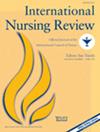Levels of Flow at Work among Nurses: A Systematic Review and Meta-Analysis
Abstract
Aim
To systematically evaluate the available literature on the overall levels of flow at work among nurses.
Background
Nurses are the core members of the medical team, who are confronted with considerable pressure, job burnout, and a high level of intention to leave. As flow refers to the optimal experiences that are the most enjoyable in human life when engaged in an activity with full involvement, a higher level of flow at work can help reduce work pressure, alleviate burnout, promote personal growth, and further improve the quality of nursing.
Method
A search was conducted on the Cochrane, EMBASE, PsycINFO, PubMed, Scopus, WOS, CINAHL, and Chinese databases, including the China Biomedical Literature (SinoMed), China National Knowledge Infrastructure (CNKI), WanFang, and Weipu databases, from the inception of the databases until October 2024. Two researchers independently conducted the literature screens, quality assessments, and data extraction on the basis of the inclusion and exclusion criteria and evaluated the risk of bias. A random-effects model was employed to achieve pooled estimates of work-related flow scales via Stata18.0 software.
Results
The pooled mean score of the work-related flow scale was 3.44 (95% CI, 3.28–3.60). Eleven studies reported scores for the subdimensions of absorption, work enjoyment, and intrinsic motivation, with scores of 3.38 (95% CI, 3.09–3.68), 3.12 (95% CI, 2.88–3.36), and 3.28 (95% CI, 3.00–3.56), respectively. Subgroup analysis suggested that nurses in China, nurses in general departments (internal medicine and surgery), and nurses ≤35 years of age might have experienced lower levels of flow at work. Additionally, studies with large sample sizes tended to report high levels of flow at work; studies published from 2019 to 2022 reported slightly higher levels of flow at work scores. Meta-regression further revealed that the country, mean age, and department of the participants might be the sources of heterogeneity.
Conclusion
This review is the first to synthesize published research and calculate a pooled score of flow at work among nurses. The results indicated that nurses reported a medium level of flow at work, with significant heterogeneity.
Implications for nursing policy
Policy makers and managers should dynamically monitor the level of nurses’ flow at work and incorporate it into the reference index system to measure and promote nurses’ personal career development.

 求助内容:
求助内容: 应助结果提醒方式:
应助结果提醒方式:


